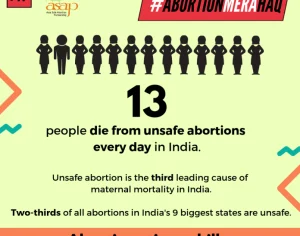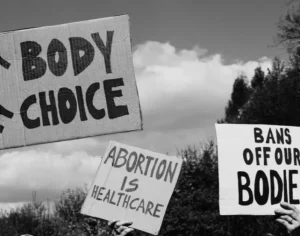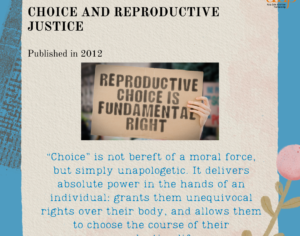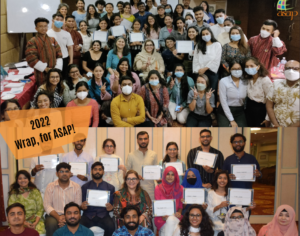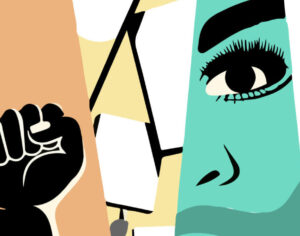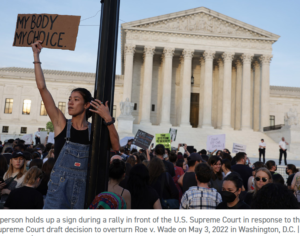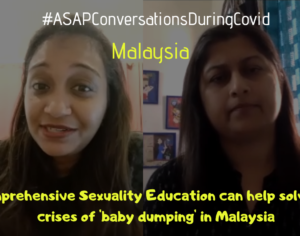Country Of The Month: Sri Lanka
 This month we will be featuring stories in relation to unsafe abortion and access to safe abortion in Sri Lanka. Today, we would like to begin with excerpts from the Country Profile written by Youth Champion, Sarah Soysa.
This month we will be featuring stories in relation to unsafe abortion and access to safe abortion in Sri Lanka. Today, we would like to begin with excerpts from the Country Profile written by Youth Champion, Sarah Soysa.
Law related to Abortion:
Abortion is generally restricted in Sri Lanka under the Penal Code of 1883, which is based on the Indian Penal Code. Section 303 of the Penal Code provides that anyone voluntarily causing a woman with child to miscarry is subject to up to three years’ imprisonment and/or payment of a fine, unless the miscarriage was caused in good faith in order to save the life of the mother. The penalty is imprisonment for up to seven years and payment of a fine if the woman is “quick with child”, a term which, while not defined in the Code, refers to an advanced stage of pregnancy when there is perception of foetal movement, as opposed to “woman with child”, which simply refers to “being pregnant”. A woman who induces her own miscarriage is subject to the same penalties. If the miscarriage is caused without the consent of the woman, whether or not she is quick with child, the person causing it is subject to up to 20 years’ imprisonment and payment of a fine (Section 304). The same penalty is imposed if the woman’s death results from any act carried out with intent to bring about a miscarriage, whether or not the offender knew that the act was likely to cause death (Section 305). Therefore simply an abortion is allowed only if the life of the mother is in danger.
Reproductive Health Perspective:
In 1973, the abortion legislation of the country was studied by a committee of the Medical Legal Society of Sri Lanka, which recommended that the law should be liberalized to allow abortions to be performed to prevent grave injury to the physical and mental health of the mother, in cases where pregnancy resulted from rape or incest, and in cases where there was substantial risk that the child, if born, would suffer from severe physical or mental abnormalities that would cause it to be seriously handicapped for life. No legislative action, however, resulted from these recommendations. The Ministry of Health has begun, however, to publicize the linkage between illegal abortion and maternal mortality as a means of giving support to a liberalization of the abortion law. Organizations working on sexual and reproductive health and rights such as Family Planning Association of Sri Lanka works to prevent unsafe abortions; and the approach is compliant with lobbying and advocating for the universal right of women to live healthy, and free from the fear of death and disease.
Abortion Statistics:
The incidence of abortion is believed to be considerably higher than is commonly acknowledged. Sri Lanka has a current total fertility rate of 2.1 children per woman and a population growth rate of 1 per cent, which is a satisfactory rate to the government. Local health officials estimated the 1999 maternal mortality rate to be 250 deaths per 100,000 live births, 25 per cent of them related to unsafe abortions. The formidable surge in unsafe abortions is a major health and social concern in Sri Lanka. A National survey conducted in 1999 reported an abortion rate of 45 per 1000 women in the 15 – 49 age groups. An alarming factor is the prevalence of induced abortion among married couples being 94%, with an abortion rate of 58 per 1000 among ever married women.However, it is estimated that around 600to 700 abortions are carried out daily in the country. The same study showed that the problem of induced abortion was mainly among the urban and semi-urban married women in the25 to 39 age group with two or more children.
Role of government:
Abortion for medical reasons to save the life of the mother has been allowed in Sri Lanka and also post abortion care which people can access without a fear and legal constrains. But regardless of that no other changes has been done by the government to the law related to abortion. Demographic and health surveys conducted by the Department of Census and Statistics have found out the issue of abortions being under reported.
There is no comprehensive sexuality education included in school curriculums in Sri Lanka and contraceptive methods is a subject which is not included at all in the education. So the government either should prevent induced abortion by giving proper education instead of turning a blind eye towards it or either legalize it at least under certain circumstances. Law in Sri Lanka is about 150 years old and this has to be reformed.
Role of religion/ religious leaders:
In Sri Lanka, abortion is only permitted in cases where pregnancy or childbirth is life threatening to the mother. In addition to the political environmental constraints, abortion faces immense barriers triggered by socio-religious perceptions. New religious group formations which happened in Sri Lanka recently slowed down the advocacy efforts on safe abortion and also contraceptive mobile clinics to a greater extent. Discussions with religious leaders had already been built up and then everything had to be stopped. In Sri Lanka religious leaders have a big say in legalising safe abortion therefore sensitizing them and getting them into an agreement is very much necessary.
Current status and potential of research:
Despite rigid statutory provisions, Sri Lankan women from higher income households who desire to terminate their pregnancies find no difficulty in doing so. They often consult a psychiatrist for severe mental depression combined with suicidal tendencies and the psychiatrist advises an abortion in order to save the life of the mother. Women from middle-income and lower income households, however, often get the services of “back-door abortionists” under primitive and unhygienic conditions, resulting in high maternal mortality and chronic ill health. The cost of unsafe abortions is largely borne by those who are most vulnerable and least able to access safe services: poor women, young women, rural women and their families bear the lasting consequences of unsafe abortion. It is a cost that is often not discussed and forgotten purposely in the debate about abortion law, a debate that sometimes misses the fact that unsafe abortions do take place under the most appalling circumstances and the day-to-day impact unsafe abortion has on women’s lives.
The area of abortion requires further study in order to ascertain the reasons for abortion. This is critically important to ensure that services are provided in a user friendly environment for women of all ages. Another concern in also the fact that septic abortion has become a major cause of maternal deaths in Sri Lanka. The high rates of abortions among married women who have completed their family size indicate that there is a service gap for older women. Also lack on comprehensive sexuality education in schools has resulted the increase of teenage pregnancies and abortions at all ages. But it is also understood that collecting accurate information regarding this sensitive topic is very hard.
For more visit our website and read the entire country profile.




